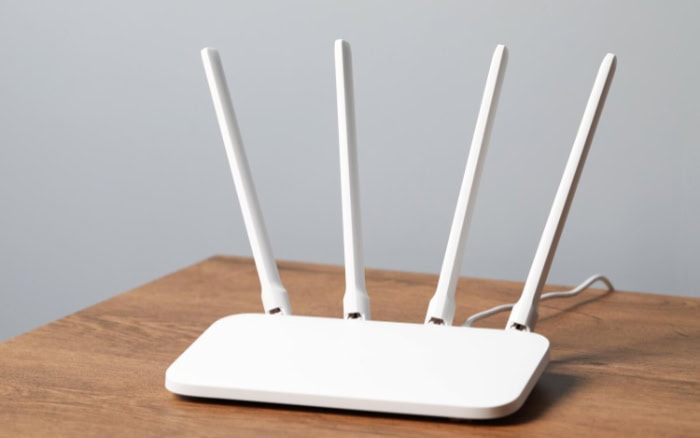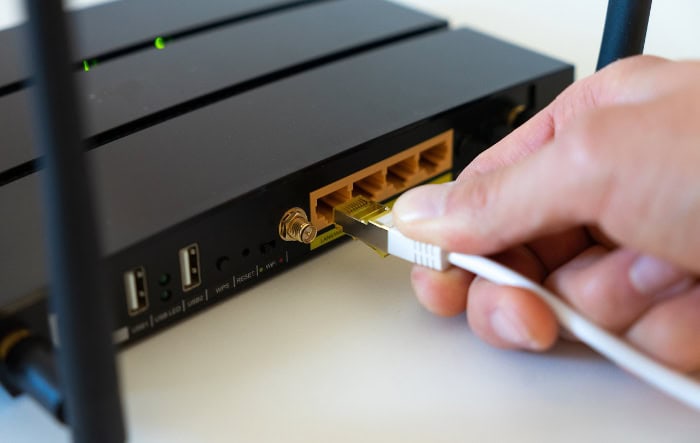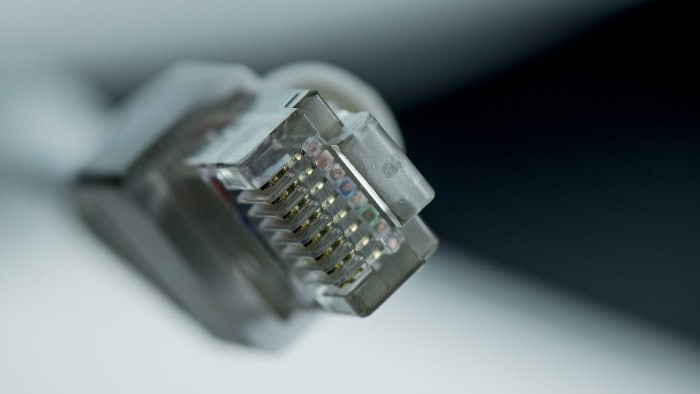WiFi vs. Ethernet: Get More from Your Internet

Networking technologies form the backbone of our connected world, silently powering our daily digital interactions. Among these, WiFi and Ethernet stand out as two dominant forces, each offering unique advantages for data transmission.
As we increasingly rely on seamless connectivity for work, entertainment, and communication, choosing between these technologies becomes crucial. WiFi’s convenience and mobility have made it ubiquitous in homes and public spaces, while Ethernet’s reliability and speed continue to be favored in professional settings.
Performance Comparison
When choosing between Ethernet and WiFi, performance is often a primary consideration. Both technologies have their strengths and weaknesses, which become apparent when examining factors such as data transfer speeds, latency, reliability, and environmental influences.
Data Transfer Speeds
The speed at which data can be transferred is a crucial metric for network performance. Both Ethernet and WiFi have theoretical maximum speeds, but real-world performance often differs significantly.
Ethernet speeds have progressed rapidly over the years. Modern Gigabit Ethernet (1000BASE-T) offers theoretical speeds of 1 Gbps, while 10 Gigabit Ethernet can reach 10 Gbps.
In real-world scenarios, Ethernet often comes close to these theoretical speeds, especially over short distances.
WiFi speeds have also improved dramatically. WiFi 6 (802.11ax) boasts theoretical speeds up to 9.6 Gbps, while its predecessor, WiFi 5 (802.11ac), can reach 3.5 Gbps.
However, real-world WiFi speeds are typically much lower due to various factors such as signal interference, distance from the router, and the number of connected devices.
In practical terms, a Gigabit Ethernet connection can often sustain speeds of 900+ Mbps, while a WiFi 6 connection might achieve 600-800 Mbps under optimal conditions. It’s important to note that these speeds are also limited by the internet service provider’s bandwidth.
Latency and Jitter
Latency refers to the time it takes for data to travel from its source to its destination, while jitter is the variation in this delay. These factors are particularly important for applications like online gaming and video conferencing.
Ethernet generally offers lower latency and jitter compared to WiFi. A typical Ethernet connection might have a latency of 1-3 milliseconds (ms) to the router, while WiFi latency can range from 2-10 ms or more, depending on conditions.
For gaming, lower latency translates to faster response times and a more responsive experience. In video conferencing, low latency and jitter result in smoother, more natural conversations with fewer interruptions or delays.
WiFi, especially on congested networks or over longer distances, can suffer from higher and more variable latency. This can lead to noticeable lag in games or stuttering in video calls.
Reliability
Network reliability encompasses factors such as packet loss and connection stability. These aspects are crucial for maintaining consistent performance across various applications.
Ethernet excels in reliability due to its wired nature. Packet loss is minimal, often less than 0.1% under normal conditions.
The physical connection also ensures a stable link that’s less prone to disconnections or interference.
WiFi, while convenient, can be less reliable. Packet loss on WiFi networks can vary widely, from near-zero under ideal conditions to 1-2% or higher in challenging environments.
Factors such as distance from the router, physical obstacles, and interference from other devices can all impact WiFi reliability.
Connection stability is another area where Ethernet shines. Once connected, an Ethernet link typically remains stable unless the cable is physically disconnected.
WiFi connections, on the other hand, can drop unexpectedly due to interference, signal weakness, or network congestion.
Environmental Factors
The performance of both Ethernet and WiFi can be significantly influenced by environmental factors, though WiFi is generally more susceptible to these influences.
For Ethernet, the primary environmental consideration is cable length. Signal degradation becomes noticeable over distances greater than 100 meters, necessitating the use of switches or repeaters for longer runs.
WiFi performance is affected by a broader range of environmental factors:
- Distance: Signal strength decreases as the distance from the router increases, leading to lower speeds and higher latency.
- Physical obstacles: Walls, floors, and large objects can weaken WiFi signals, reducing performance.
- Interference: Other electronic devices, especially those operating on the same frequency (like microwaves or cordless phones), can interfere with WiFi signals.
- Network congestion: In areas with many WiFi networks, overlapping channels can lead to reduced performance.
- Building materials: Certain materials, such as metal or concrete, can significantly attenuate WiFi signals.
These environmental factors make WiFi performance more variable and context-dependent compared to the relatively consistent performance of Ethernet connections.
Security and Network Management

The security and management of network infrastructure are crucial aspects of any modern connectivity solution. Both Ethernet and WiFi present unique challenges and opportunities in these areas.
Encryption Protocols
Encryption is a fundamental component of network security, protecting data as it travels between devices and across networks.
WiFi networks primarily rely on WPA (Wi-Fi Protected Access) protocols for encryption. The latest standard, WPA3, offers significant improvements over its predecessors.
WPA3 uses 128-bit encryption for personal networks and 192-bit encryption for enterprise networks. It also implements features like forward secrecy, which generates a unique encryption key for each session, and protection against offline dictionary attacks.
Ethernet, being a wired technology, doesn’t inherently require encryption at the physical layer. The physical connection itself provides a level of security, as accessing the network requires a direct, physical link.
However, for additional security, many organizations implement protocols like 802.1X for port-based network access control and MACsec (Media Access Control Security) for data encryption over Ethernet links.
Vulnerability Assessment
WiFi and Ethernet have different security profiles, with WiFi being more susceptible to remote attacks due to its wireless nature.
WiFi networks face several common attack vectors:
- Man-in-the-middle attacks: An attacker intercepts communication between two parties.
- Evil twin attacks: A malicious access point mimics a legitimate one to steal data.
- Packet sniffing: Capturing and analyzing network traffic to extract sensitive information.
- Brute force attacks: Attempting to guess passwords through trial and error.
These vulnerabilities highlight the importance of robust security measures for WiFi networks, including strong encryption, regular security audits, and user education about potential threats.
Ethernet networks, in contrast, are protected from most of these remote attacks due to their physical nature. The primary security concerns for Ethernet typically involve maintaining physical access controls to the network infrastructure.
Network Administration
The ease of setup, monitoring, and troubleshooting varies between Ethernet and WiFi networks.
Ethernet network setup typically involves physical cable installation and configuration of switches and routers. While this can be labor-intensive initially, it often results in a more stable and predictable network. Monitoring Ethernet networks is straightforward, with tools that can easily track bandwidth usage, detect cable faults, and identify unauthorized devices.
WiFi network setup is generally less labor-intensive, as it doesn’t require extensive cabling. However, proper planning is crucial to ensure optimal coverage and minimize interference.
WiFi networks require more ongoing management, including regular updates to security protocols, monitoring for rogue access points, and optimizing channel allocation. Troubleshooting WiFi issues can be more complex due to the variety of factors that can affect wireless performance.
Scalability
As networks grow, the ability to manage multiple devices and accommodate network expansion becomes increasingly important.
Ethernet networks offer excellent scalability in terms of performance. Adding more devices typically doesn’t significantly impact the speed or reliability of existing connections.
However, physical scalability can be challenging, as expanding an Ethernet network often requires running new cables and potentially adding switches or routers.
WiFi networks provide greater flexibility for adding new devices without physical infrastructure changes. However, as the number of connected devices increases, network performance can degrade due to increased competition for bandwidth.
Modern WiFi standards like WiFi 6 have improved multi-device handling, but limitations still exist.
Practical Considerations

When implementing a network solution, several practical factors come into play beyond just performance and security. These considerations include device compatibility, mobility requirements, installation logistics, and the potential for hybrid setups.
Device Compatibility
The choice between Ethernet and WiFi often depends on the devices that need to connect to the network.
Modern laptops typically come equipped with both Ethernet ports and WiFi capabilities, offering flexibility in connection options. However, many ultrabooks and tablets have eschewed Ethernet ports in favor of slimmer designs, relying solely on WiFi for connectivity.
IoT (Internet of Things) devices present a mixed landscape. Some smart home devices, like security cameras or smart TVs, offer both Ethernet and WiFi connections.
Others, particularly smaller or battery-powered devices such as smart sensors or wearables, usually only support WiFi due to size and power constraints.
Legacy hardware can pose challenges for both technologies. Older computers might lack support for modern WiFi standards, limiting their wireless performance.
Conversely, some legacy industrial equipment may only have Ethernet connectivity, necessitating a wired network infrastructure.
Mobility and Flexibility
The need for mobility and flexibility in network access varies greatly depending on the environment and use case.
In office layouts, WiFi offers significant advantages for mobile workers. It allows employees to move freely with their laptops, tablets, or smartphones, facilitating impromptu meetings and flexible workspaces.
Ethernet, while less flexible, remains popular for workstations, servers, and other stationary equipment that requires consistent, high-speed connections.
Home environments benefit from the convenience of WiFi, especially for mobile devices and in areas where running Ethernet cables would be impractical. However, many home users opt for Ethernet connections for devices like gaming consoles, desktop computers, or smart TVs to ensure the best possible performance for bandwidth-intensive applications.
Installation Requirements
The installation process differs significantly between Ethernet and WiFi networks, each with its own set of requirements and challenges.
Ethernet installation involves running physical cables throughout a building or space.
This process can be labor-intensive and may require professional installation, especially in larger buildings or when retrofitting existing structures. Considerations include cable routing, wall or floor penetrations, and the placement of network switches.
While potentially more complex initially, this setup often results in a more stable and predictable network.
WiFi installation centers around the placement of wireless access points. The primary challenge lies in ensuring comprehensive coverage without dead spots or areas of weak signal.
This often requires careful planning and may involve conducting site surveys to determine optimal access point locations. While generally less invasive than Ethernet installation, achieving optimal WiFi coverage can sometimes necessitate multiple access points and careful configuration.
Hybrid Setups
Many modern networks leverage both Ethernet and WiFi to create hybrid setups that capitalize on the strengths of each technology.
In these configurations, Ethernet is typically used for devices that require the highest speeds and most stable connections. This might include servers, desktop workstations, network-attached storage devices, and high-performance gaming systems.
The wired backbone of the network often uses Ethernet to connect routers, switches, and wireless access points.
WiFi is then employed for mobile devices and in areas where running Ethernet cables is impractical or undesirable. This approach provides flexibility for users while maintaining a robust core network infrastructure.
Advanced hybrid setups might also incorporate technologies like Power over Ethernet (PoE) to simplify the deployment of wireless access points, IP cameras, and other networked devices by delivering both data and power over a single Ethernet cable.
By combining Ethernet and WiFi, organizations and homeowners can create versatile networks that balance performance, convenience, and cost-effectiveness. This approach allows for tailoring the network to specific needs and constraints while providing a foundation that can adapt to future requirements.
Conclusion
WiFi and Ethernet each offer distinct advantages in the realm of network connectivity. Ethernet provides superior speed, reliability, and security, making it ideal for stationary devices and high-performance applications.
Its wired nature ensures consistent performance but limits mobility. WiFi, on the other hand, excels in flexibility and convenience, allowing seamless connectivity for mobile devices across various environments.
However, it can be more susceptible to interference and security risks.
Performance considerations reveal Ethernet’s edge in raw speed and low latency, while WiFi has made significant strides with recent standards like WiFi 6. Security measures for both technologies continue to evolve, with WPA3 enhancing WiFi protection and physical access controls safeguarding Ethernet networks.
Practical factors such as device compatibility, installation requirements, and environmental constraints play a crucial role in choosing between these technologies. Many modern networks leverage hybrid setups, combining the strengths of both Ethernet and WiFi to create versatile and efficient infrastructures.
Selecting the right networking solution depends on specific needs, priorities, and constraints. By carefully evaluating performance requirements, security concerns, and practical considerations, users can make informed decisions that optimize their network experience.
As technology advances, both Ethernet and WiFi will continue to adapt, offering improved capabilities to meet the growing demands of our connected world.


